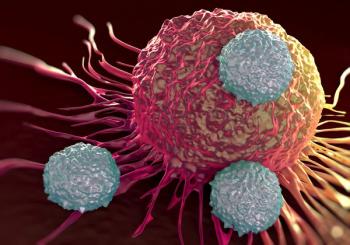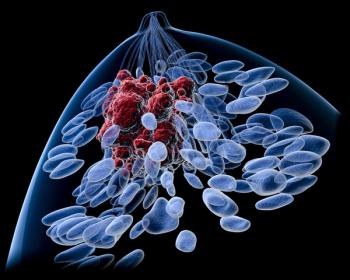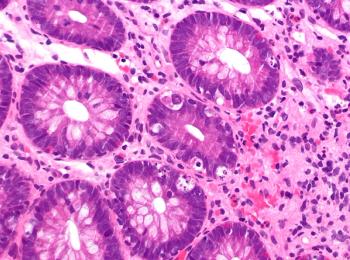
Codon 12 Mutations May Signal Benefit With RMC-6236 in PDAC
The mechanism of action for daraxonrasib inhibits effectors and signaling while forming a relatively unstable tri-complex with codon 12 mutations.
Pre-clinical data demonstrating an increased benefit with RAS(ON) inhibitors for patients with pancreatic ductal adenocarcinoma (PDAC) formed the initial basis for assessing daraxonrasib (RMC-6236) in this indication, according to Ignacio Garrido-Laguna, MD, PhD, MBA.
CancerNetwork® spoke with Garrido-Laguna, professor of Oncology and co-leader of the GI Oncology Multidisciplinary Disease Group at the University of Utah Huntsman Cancer Institute, about whether any patient subgroups had particular benefit with daraxonrasib treatment for RAS-mutant PDAC following a poster presentation of findings from a phase 1 trial (NCT05379985) he gave at the
Garrido-Laguna began by explaining his inclusion of patients with RAS-mutant PDAC, describing that these patients may have a wide spectrum of mutations. He further expressed that the study initially targeted patients with codon 12 KRAS mutations based on clinical benefit observed in pre-clinical data. Additionally, he outlined the mechanism of daraxonrasib, which inhibits effectors and signaling while forming a relatively unstable tri-complex with codon 12 mutations, leading to dissociation and increased hydrolysis of GTP.
He then expressed that the mechanism of action seen with RAS(ON) inhibitors in preclinical trials was mostly seen with G12 mutations, as opposed to those with G13 or Q61 mutations. Garrido-Laguna stated that the preclinical data may explain increased activity in codon 12 mutations vs other mutations observed in the study.
Findings presented at ASCO GI revealed favorable responses among patients classified as having KRAS G12X mutations vs those identified as having RAS mutations. For patients treated with 300 mg of daraxonrasib, the objective response rates (ORRs) were 36% vs 27% in the respective groups. In those treated with 160 to 300 mg of daraxonrasib, they were 29% and 25%, respectively.
The disease control rates (DCRs) showed a slight benefit for those identified with RAS mutations vs patients with KRAS G12X mutations. For those treated with 300 mg of daraxonrasib, the DCRs were 95% vs 91% in each respective group. In patients treated with 160 to 300 mg of daraxonrasib, they were 93% vs 91%.
Transcript:
We included patients who have RAS mutations. RAS mutations [make up] a wide spectrum of different mutations. Initially, the study was targeting patients who had KRAS mutations in codon 12, and there is pre-clinical data that suggests that these [patients with] codon 12 mutations are more likely to benefit.
There is some beautiful work from [the lab of] Piro Lito, MD, PhD, recently published in Nature2 that suggests that the mechanism of action of this tri-complex [inhibitor] is dual. It inhibits downstream effectors and downstream signaling, and the compound forms a relatively unstable tri-complex with codon 12 mutations that leads to dissociation of the tri-complex and leads to increased hydrolysis of GTP, [which] converts the active form of RAS to the non-active form.
That is the other kind of mechanism of action that is mostly seen in patients [with G12 mutations]. For patients with G13 and Q61, or at least in pre-clinical studies, we did not see that. That may explain increased activity targeting codon 12 mutations vs other mutations.
References
- Garrido-Laguna I, Wolpin B, Park W, et al. Safety, efficacy, and on-treatment circulating tumor DNA (ctDNA) changes from a phase 1 study of RMC-6236, a RAS(ON) multi-selective, tri-complex inhibitor, in patients with RAS mutant pancreatic ductal adenocarcinoma (PDAC). J Clin Oncol. 2025;43(suppl 4):722. doi:10.1200/JCO.2025.43.4_suppl.722
- Cuevas-Navarro A, Pourfarjam Y, Hu F, et al. Pharmacological restoration of GTP hydrolysis by mutant RAS. Nature. 2025;637(8044):224-229. doi:10.1038/s41586-024-08283-2
Newsletter
Stay up to date on recent advances in the multidisciplinary approach to cancer.

















































































